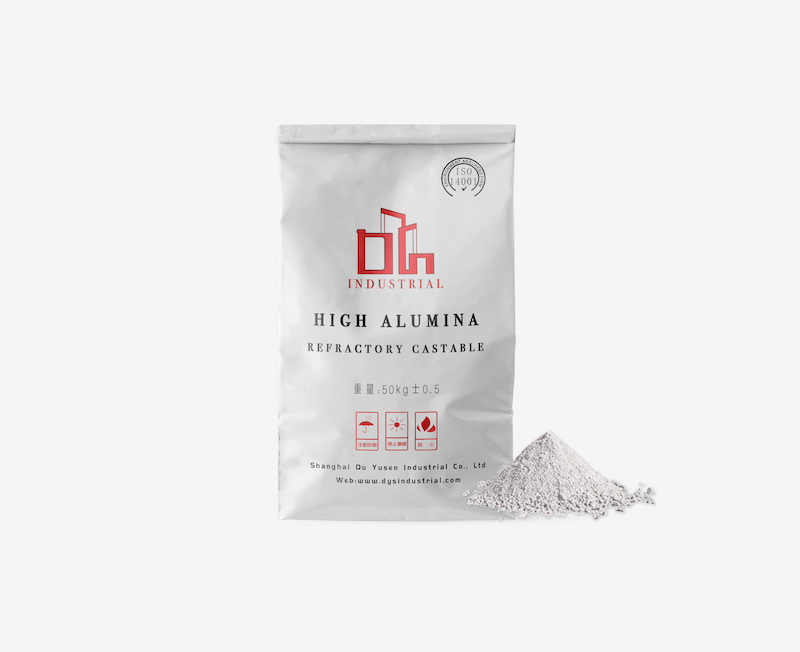How to choose suitable alumina powder and dispersant for High-Aluminum Castables?
Feb 28, 2024When we studied chemistry, we learned that water is composed of H2 and O2, and salt is composed of Na and Cl. Every item has a path to make it. In the production process of high-aluminum castables, different materials also need to be added. The properties of high-aluminum castables made of different materials are also different. Today we will talk about the alumina and dispersant in high-aluminum castables.
The key to high-aluminum castables is ultrafine fly ash and dispersants. The ultrafine powder has a small particle size and can effectively fill the pores formed by the accumulation of high-aluminum castable aggregates and fine powder, reducing the water demand for high-aluminum castable construction and improving construction performance. Someone studied the basic characteristics of four kinds of alumina powders that are already on the market, and added the four kinds of alumina powders to high-aluminum castables for experimental research. However, to obtain high-aluminum castables with construction performance, it is necessary to select a dispersant suitable for the material system, polycarboxylate, sodium hexametaphosphate, sodium citrate, sodium citrate and basic formulas for comparative study.
Raw materials of high-aluminum castables: Chemical composition of main raw materials: mainly high-alumina bauxite clinker, 8-5, 5-3, 3-1, 1-0, ≤0.074mm, alumina powder, tripolyphosphoric acid Sodium, polycarboxylate, sodium citrate, pure calcium aluminate 71 cement, etc.
Study on the basic properties of four types of micropowders. Alumina powder particle size distribution curve According to the particle size distribution and particle size distribution of alumina powder, A and B are single-modal alumina powder, micro powder C has an obvious bimodal distribution, and alumina micro powder D has a multimodal distribution. SEM results show that the particle size of aluminum oxide fine powder C is relatively small and the distribution range is small, 0.30μ14.31μ31μm. The distribution of large and small particles is relatively concentrated, and the two peaks of particle distribution are located at 1.3 and 3.6 μm respectively.
Alumina fine powder B has a small particle size distribution range, uneven particle size distribution, and a wide particle size range of 0.27-42.80 μm. The particle size distribution of multimodal alumina fine powder D is also very wide. The peaks of particle distribution are 1.2, 6.4 and 16.4 μm respectively, and the particle distribution pattern is mostly flake-shaped. From the above analysis, it can be seen that if four kinds of alumina powders are added to high-aluminum castables, the performance of introducing alumina powder C is better.
 Four kinds of alumina micropowders were added to high-aluminum castables to further verify the influence of different micropowders on material properties. Fixed aluminum castable is used, the mass ratio of aggregate to fine powder is 67:33, and alumina is 7%. The sample formula is high aluminum castable fluidity test results. Since alumina micropowder C has the best flow performance when the amount of water added remains unchanged, the reason is that the particle size of alumina micropowder C is basically the same, the particle size is basically the same, and the particle size distribution range is wide. Therefore, its filling performance is better than that of the other three groups of materials.
Four kinds of alumina micropowders were added to high-aluminum castables to further verify the influence of different micropowders on material properties. Fixed aluminum castable is used, the mass ratio of aggregate to fine powder is 67:33, and alumina is 7%. The sample formula is high aluminum castable fluidity test results. Since alumina micropowder C has the best flow performance when the amount of water added remains unchanged, the reason is that the particle size of alumina micropowder C is basically the same, the particle size is basically the same, and the particle size distribution range is wide. Therefore, its filling performance is better than that of the other three groups of materials.
The results show that under a certain flow rate, the amount of water required to introduce polycarboxylate into high-aluminum castables during the casting process is relatively small.